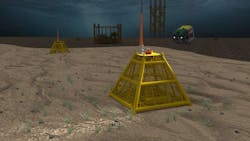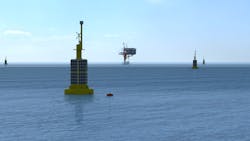Service monitors integrity of subsea CO2 sites
Offshore staff
It involves monitoring of subsurface fiber-optic seismic arrays, and dissolved CO2 gas detection via self-powered (solar or wave) energy, and remote data transmission nodes between the seabed and surface.
Permanently installed, shallow-bore fiber-optic arrays, deployed in remote locations within the injection site block, allow for repeat seismic surveys if required.
According to the company, this will demonstrate that the storage site is performing as expected against the baseline engineering and seismic data, both during and post-CO2 injection.
The CO2 plume can be tracked and its migration within the formation can be compared against predictions and storage site expectations. If deviations occur, the use can take steps such as reducing or stopping injection or diverting injection to alternative well centers.
A reactive alarm system identifies any CO2 leaks into the water column. The CO2 sensors detect and compare dissolved gas percentages combined with current speed, direction and other node location data to identify the location and extent of a suspected leak.
These data are then transmitted onshore, via satellite, for analysis and verification.
11.15.2022

